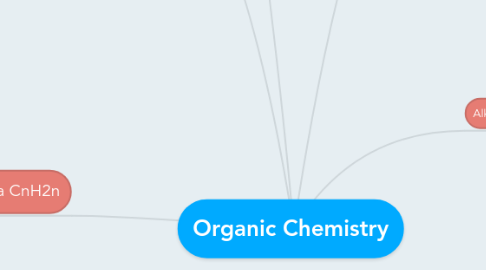
1. Alkenes - formula CnH2n
1.1. chemical properties - more reactive than alkanes
1.2. chemical reactions-combustion - complete -> carbon dioxide and water, incomplete -> carbon monoxide, carbon dioxide, water and carbon
1.3. addition reactions
1.3.1. hydrogenation (with catalyst at 200 oC
1.3.2. hydration -> acohols
1.3.3. bromination
1.4. others: functional group C=C
1.5. unsaturated compounds
1.6. can undergo addition reactions
2. Alcohols - formula CnH2nOH
2.1. physical properties
2.1.1. colourless
2.1.2. miscible in water
2.1.3. flammable
2.1.4. boiling points increase with added C atoms
2.1.5. increase in mass as increase number of C
2.2. reactions
2.2.1. combustion: alcohols + oxygen -> carbon dioxide and water
2.2.2. oxidation ->carboxylic acid
2.2.3. esterification: alcohol + carboxylic acid ->
2.2.3.1. esters have compounds that have fruity smells and are used as artificial flavours
2.3. manufacturing Ethanol
2.3.1. from ethene and water
2.3.2. by fermentation
2.3.3. uses of ethanol: in drinks, as solvent, as fuel
2.4. polimerisation
2.4.1. addition - breaking of C=C bonds in smaller alkene compounds
2.4.2. condensation - joining small monomer molecules by elimination
3. Carboxylic Acids - fromula CnH2nCOOH
3.1. esterification: condensation reaction in presence of H2SO4
3.2. reactions with acohol - esterification
3.3. properties: with weak acids- dissociation,
3.4. completely miscible with water
3.5. carbonates - acid + carbonate -> Carbon dioxide and salt
3.6. alkali + insoluble bases -> salt and water (neutralization reaction)
4. Alkanes - formula: CnH2n+2
4.1. insoluble in water
4.2. soluble in organic solvents
4.3. higher boiling points with higher number of C
4.4. less volatile and flamable
4.5. more viscos
4.6. saturated compounds that cannot undergo further adddition reaction, only substitution reactions
4.7. complete combustion reaction -> carbon dioxide and water
4.8. incomplete combustion -> carbon monoxide, carbon dioxide, water and carbon
4.9. each compound differs with a CH2- group of atoms
5. Hydrocarbons
5.1. Cracking process
5.1.1. petrol
5.1.2. diesel
5.1.3. lubricants and oils
